Fulvio Mastrogiovanni
Dept. of Informatics, Bioengineering, Robotics, and Systems Engineering, University of Genoa, Genoa, Italy
Locally Optimal Solutions to Constraint Displacement Problems via Path-Obstacle Overlaps
Nov 15, 2025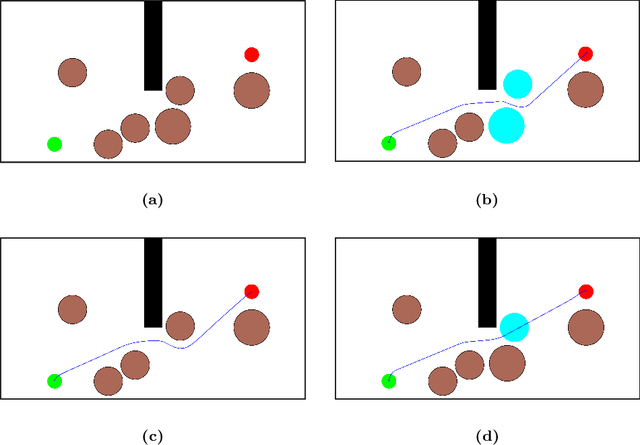
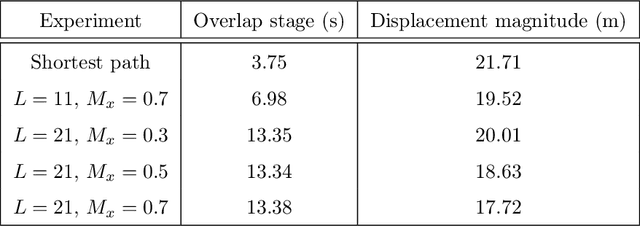
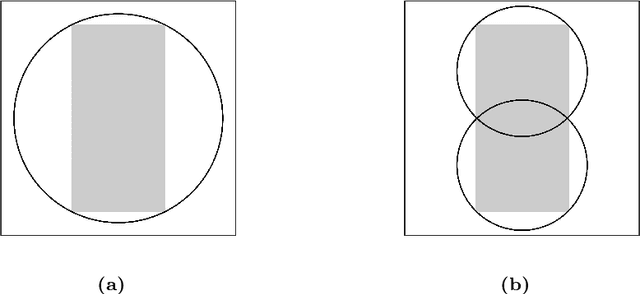

Abstract:We present a unified approach for constraint displacement problems in which a robot finds a feasible path by displacing constraints or obstacles. To this end, we propose a two stage process that returns locally optimal obstacle displacements to enable a feasible path for the robot. The first stage proceeds by computing a trajectory through the obstacles while minimizing an appropriate objective function. In the second stage, these obstacles are displaced to make the computed robot trajectory feasible, that is, collision-free. Several examples are provided that successfully demonstrate our approach on two distinct classes of constraint displacement problems.
A Comparative Study of Human Activity Recognition: Motion, Tactile, and multi-modal Approaches
May 13, 2025Abstract:Human activity recognition (HAR) is essential for effective Human-Robot Collaboration (HRC), enabling robots to interpret and respond to human actions. This study evaluates the ability of a vision-based tactile sensor to classify 15 activities, comparing its performance to an IMU-based data glove. Additionally, we propose a multi-modal framework combining tactile and motion data to leverage their complementary strengths. We examined three approaches: motion-based classification (MBC) using IMU data, tactile-based classification (TBC) with single or dual video streams, and multi-modal classification (MMC) integrating both. Offline validation on segmented datasets assessed each configuration's accuracy under controlled conditions, while online validation on continuous action sequences tested online performance. Results showed the multi-modal approach consistently outperformed single-modality methods, highlighting the potential of integrating tactile and motion sensing to enhance HAR systems for collaborative robotics.
Achieving Scalable Robot Autonomy via neurosymbolic planning using lightweight local LLM
May 13, 2025Abstract:PDDL-based symbolic task planning remains pivotal for robot autonomy yet struggles with dynamic human-robot collaboration due to scalability, re-planning demands, and delayed plan availability. Although a few neurosymbolic frameworks have previously leveraged LLMs such as GPT-3 to address these challenges, reliance on closed-source, remote models with limited context introduced critical constraints: third-party dependency, inconsistent response times, restricted plan length and complexity, and multi-domain scalability issues. We present Gideon, a novel framework that enables the transition to modern, smaller, local LLMs with extended context length. Gideon integrates a novel problem generator to systematically generate large-scale datasets of realistic domain-problem-plan tuples for any domain, and adapts neurosymbolic planning for local LLMs, enabling on-device execution and extended context for multi-domain support. Preliminary experiments in single-domain scenarios performed on Qwen-2.5 1.5B and trained on 8k-32k samples, demonstrate a valid plan percentage of 66.1% (32k model) and show that the figure can be further scaled through additional data. Multi-domain tests on 16k samples yield an even higher 70.6% planning validity rate, proving extensibility across domains and signaling that data variety can have a positive effect on learning efficiency. Although long-horizon planning and reduced model size make Gideon training much less efficient than baseline models based on larger LLMs, the results are still significant considering that the trained model is about 120x smaller than baseline and that significant advantages can be achieved in inference efficiency, scalability, and multi-domain adaptability, all critical factors in human-robot collaboration. Training inefficiency can be mitigated by Gideon's streamlined data generation pipeline.
A Social Robot with Inner Speech for Dietary Guidance
May 13, 2025Abstract:We explore the use of inner speech as a mechanism to enhance transparency and trust in social robots for dietary advice. In humans, inner speech structures thought processes and decision-making; in robotics, it improves explainability by making reasoning explicit. This is crucial in healthcare scenarios, where trust in robotic assistants depends on both accurate recommendations and human-like dialogue, which make interactions more natural and engaging. Building on this, we developed a social robot that provides dietary advice, and we provided the architecture with inner speech capabilities to validate user input, refine reasoning, and generate clear justifications. The system integrates large language models for natural language understanding and a knowledge graph for structured dietary information. By making decisions more transparent, our approach strengthens trust and improves human-robot interaction in healthcare. We validated this by measuring the computational efficiency of our architecture and conducting a small user study, which assessed the reliability of inner speech in explaining the robot's behavior.
A Task and Motion Planning Framework Using Iteratively Deepened AND/OR Graph Networks
Mar 10, 2025Abstract:In this paper, we present an approach for integrated task and motion planning based on an AND/OR graph network, which is used to represent task-level states and actions, and we leverage it to implement different classes of task and motion planning problems (TAMP). Several problems that fall under task and motion planning do not have a predetermined number of sub-tasks to achieve a goal. For example, while retrieving a target object from a cluttered workspace, in principle the number of object re-arrangements required to finally grasp it cannot be known ahead of time. To address this challenge, and in contrast to traditional planners, also those based on AND/OR graphs, we grow the AND/OR graph at run-time by progressively adding sub-graphs until grasping the target object becomes feasible, which yields a network of AND/OR graphs. The approach is extended to enable multi-robot task and motion planning, and (i) it allows us to perform task allocation while coordinating the activity of a given number of robots, and (ii) can handle multi-robot tasks involving an a priori unknown number of sub-tasks. The approach is evaluated and validated both in simulation and with a real dual-arm robot manipulator, that is, Baxter from Rethink Robotics. In particular, for the single-robot task and motion planning, we validated our approach in three different TAMP domains. Furthermore, we also use three different robots for simulation, namely, Baxter, Franka Emika Panda manipulators, and a PR2 robot. Experiments show that our approach can be readily scaled to scenarios with many objects and robots, and is capable of handling different classes of TAMP problems.
An Incremental Sampling and Segmentation-Based Approach for Motion Planning Infeasibility
Jan 20, 2025Abstract:We present a simple and easy-to-implement algorithm to detect plan infeasibility in kinematic motion planning. Our method involves approximating the robot's configuration space to a discrete space, where each degree of freedom has a finite set of values. The obstacle region separates the free configuration space into different connected regions. For a path to exist between the start and goal configurations, they must lie in the same connected region of the free space. Thus, to ascertain plan infeasibility, we merely need to sample adequate points from the obstacle region that isolate start and goal. Accordingly, we progressively construct the configuration space by sampling from the discretized space and updating the bitmap cells representing obstacle regions. Subsequently, we partition this partially built configuration space to identify different connected components within it and assess the connectivity of the start and goal cells. We illustrate this methodology on five different scenarios with configuration spaces having up to 5 degree-of-freedom (DOF).
IFRA: a machine learning-based Instrumented Fall Risk Assessment Scale derived from Instrumented Timed Up and Go test in stroke patients
Jan 16, 2025



Abstract:Effective fall risk assessment is critical for post-stroke patients. The present study proposes a novel, data-informed fall risk assessment method based on the instrumented Timed Up and Go (ITUG) test data, bringing in many mobility measures that traditional clinical scales fail to capture. IFRA, which stands for Instrumented Fall Risk Assessment, has been developed using a two-step process: first, features with the highest predictive power among those collected in a ITUG test have been identified using machine learning techniques; then, a strategy is proposed to stratify patients into low, medium, or high-risk strata. The dataset used in our analysis consists of 142 participants, out of which 93 were used for training (15 synthetically generated), 17 for validation and 32 to test the resulting IFRA scale (22 non-fallers and 10 fallers). Features considered in the IFRA scale include gait speed, vertical acceleration during sit-to-walk transition, and turning angular velocity, which align well with established literature on the risk of fall in neurological patients. In a comparison with traditional clinical scales such as the traditional Timed Up & Go and the Mini-BESTest, IFRA demonstrates competitive performance, being the only scale to correctly assign more than half of the fallers to the high-risk stratum (Fischer's Exact test p = 0.004). Despite the dataset's limited size, this is the first proof-of-concept study to pave the way for future evidence regarding the use of IFRA tool for continuous patient monitoring and fall prevention both in clinical stroke rehabilitation and at home post-discharge.
Kinesthetic Teaching in Robotics: a Mixed Reality Approach
Sep 03, 2024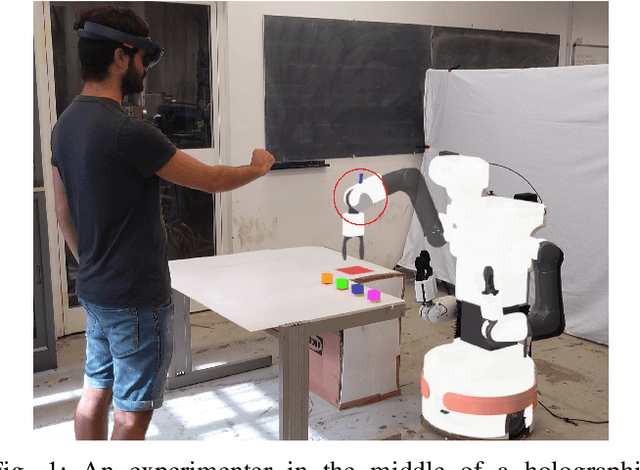
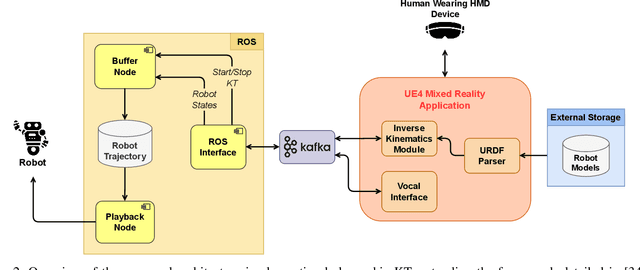
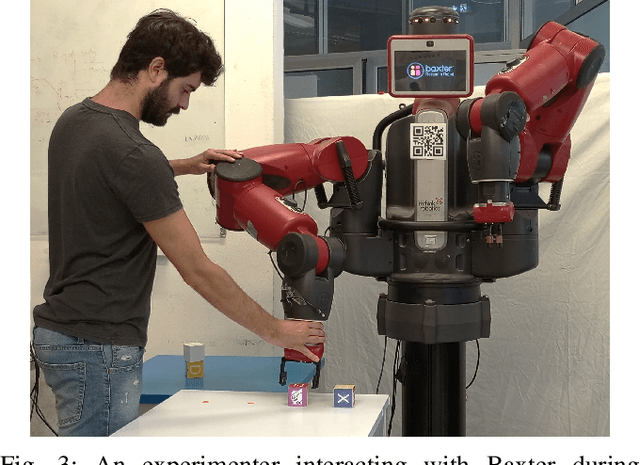
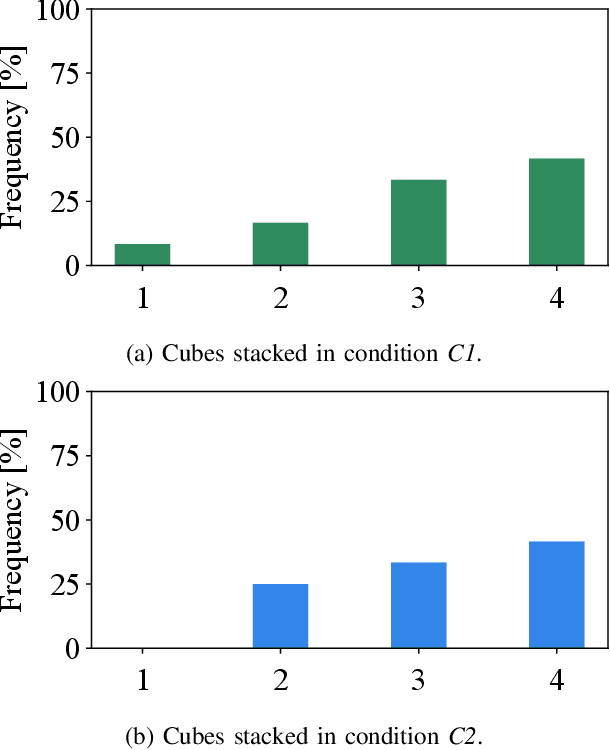
Abstract:As collaborative robots become more common in manufacturing scenarios and adopted in hybrid human-robot teams, we should develop new interaction and communication strategies to ensure smooth collaboration between agents. In this paper, we propose a novel communicative interface that uses Mixed Reality as a medium to perform Kinesthetic Teaching (KT) on any robotic platform. We evaluate our proposed approach in a user study involving multiple subjects and two different robots, comparing traditional physical KT with holographic-based KT through user experience questionnaires and task-related metrics.
Investigating Mixed Reality for Communication Between Humans and Mobile Manipulators
Sep 03, 2024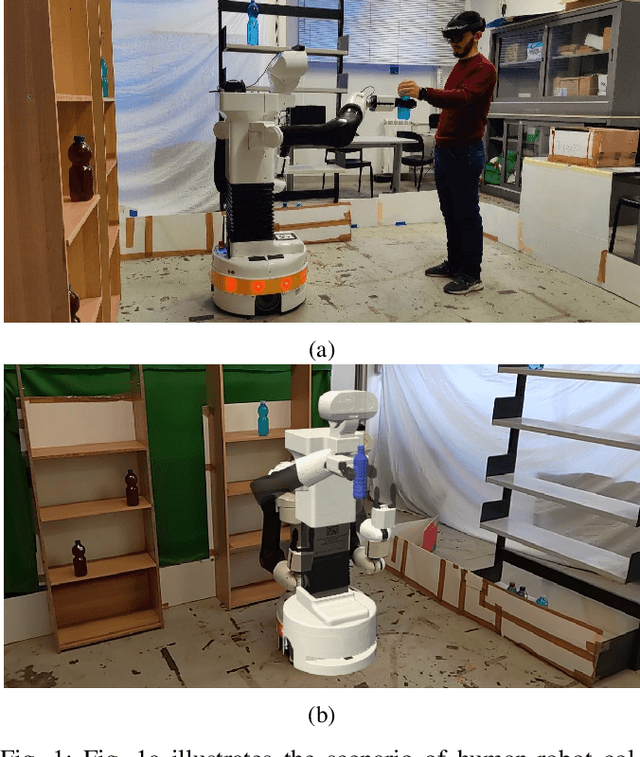
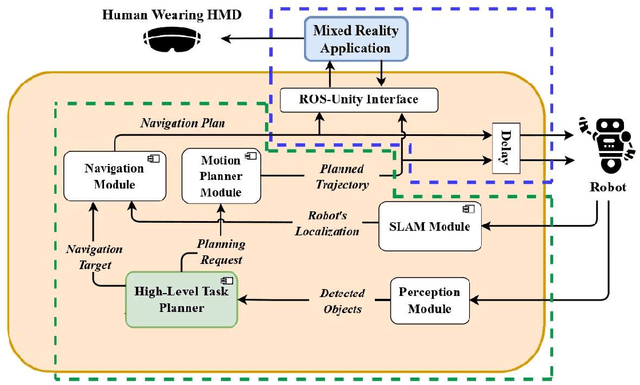
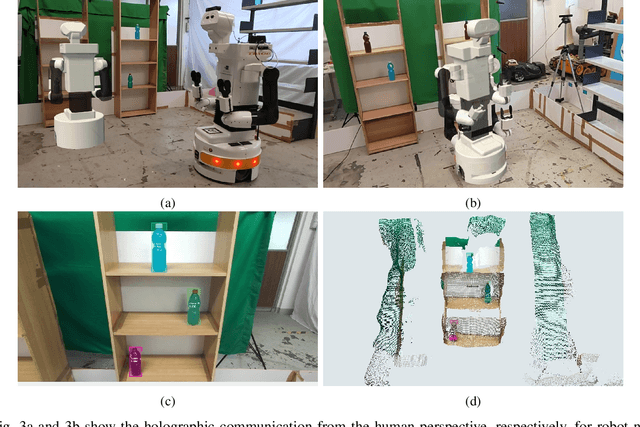
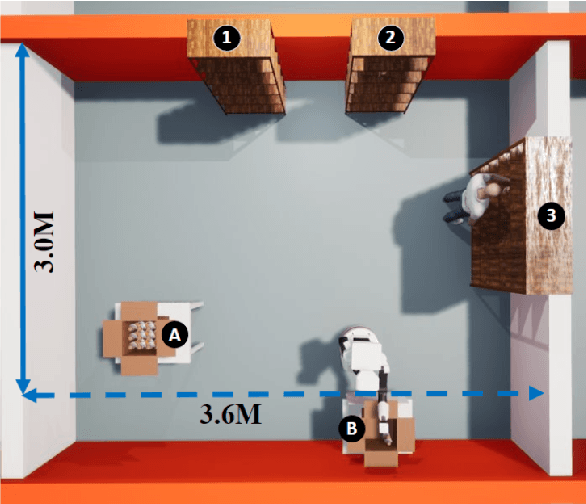
Abstract:This article investigates mixed reality (MR) to enhance human-robot collaboration (HRC). The proposed solution adopts MR as a communication layer to convey a mobile manipulator's intentions and upcoming actions to the humans with whom it interacts, thus improving their collaboration. A user study involving 20 participants demonstrated the effectiveness of this MR-focused approach in facilitating collaborative tasks, with a positive effect on overall collaboration performances and human satisfaction.
The Effects of Selected Object Features on a Pick-and-Place Task: a Human Multimodal Dataset
Jul 18, 2024Abstract:We propose a dataset to study the influence of object-specific characteristics on human pick-and-place movements and compare the quality of the motion kinematics extracted by various sensors. This dataset is also suitable for promoting a broader discussion on general learning problems in the hand-object interaction domain, such as intention recognition or motion generation with applications in the Robotics field. The dataset consists of the recordings of 15 subjects performing 80 repetitions of a pick-and-place action under various experimental conditions, for a total of 1200 pick-and-places. The data has been collected thanks to a multimodal setup composed of multiple cameras, observing the actions from different perspectives, a motion capture system, and a wrist-worn inertial measurement unit. All the objects manipulated in the experiments are identical in shape, size, and appearance but differ in weight and liquid filling, which influences the carefulness required for their handling.
* Camera ready version. Full paper available in open-access at https://doi.org/10.1177/02783649231210965 Dataset available on Kaggle (DOI: 10.34740/KAGGLE/DS/2319925, https://www.kaggle.com/datasets/alessandrocarf/effects-of-object-characteristics-on-manipulations)
 Add to Chrome
Add to Chrome Add to Firefox
Add to Firefox Add to Edge
Add to Edge